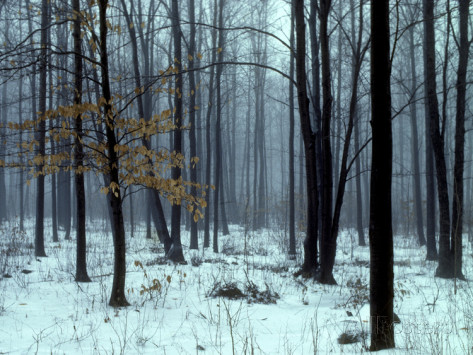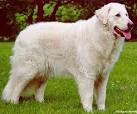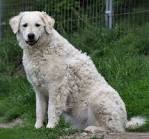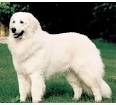History:
The Kuvasz (Hungarian pronunciation: [ˈkuvɒs]), is an ancient breed of a livestock dog of Hungarian origin. Mention of the breed can be found in old Hungarian texts. It has historically been used as a royal guard dog, or to guard livestock, but has been increasingly found in homes as a pet over the last seventy years.
The word most likely comes from the Turkic word kavas meaning guard or soldier or kuwasz meaning protector. A related theory posits that the word may have originated from the ancient farmers of Russia, the Chuvash, who nurtured the breed for generations and contributed many words to the Hungarian language.
By the end of World War II, nearly all the Kuvasz dogs in Hungary had been killed. The dogs had such a reputation for protecting their families that they were actively sought and killed by German and Soviet soldiers, while at the same time some German officers used to take Kuvasz dogs home with them. After the Soviet invasion and the end of the war, the breed was nearly extinct in Hungary. After the war, it was revealed that fewer than thirty Kuvasz were left in Hungary and some sources indicate the number may have been as few as twelve. Since then, due to many dedicated breeders, Kuvasz breed have repopulated Hungary. However, as a result of this near extinction, the genetic pool available to breeders was severely restricted and there is conjecture that some may have used other breeds, such as the Great Pyrenees, to continue their programs. The issue is further clouded by the need to use an open stud book system at the time to rebuild the breed.
Temperament:
This breed is bold, brave and fearless. They were bred to work independently, which means they are not easy to obedience train. Training should never be harsh, but rather needs to be calm but firm, by a confident experienced, dominant person. The handler needs to have an air of natural authority to them. This dog needs to be controlled with the mind, not the hand. The dog will be looking for a leader and owners need to be stronger minded than the dog. They will be willful with meek or passive owners. All members of the family need to be taught how to handle the dog right from puppyhood. Owners need to teach the dog to accept welcomed guests and to look to the owner for leadership, rather than the dog expecting the owners to look to him for leadership. The biggest key to training a Kuvasz is to understand the nature of the breed as an independent guardian. It is very important NOT to use harsh training methods, but rather calm, firm methods.
Kuvasz that are going to work as flock guards need special training. An expert should be called in to assist if you are not familiar with the process. Puppies that are about 6 weeks old should not live inside the home with the humans, but rather with the flock they will be called upon to guard, so they can form a bond. When they are raised to work as the flock guardian they were bred to be they will be very reserved with strangers and territorial. A police dog trainer would be exactly the wrong kind of trainer to use. A police dog type of temperament is not what the Kuvasz is. They make terrible police dogs because they are too independent. They judge, not you, what force is necessary in any situation, based on what they believe. That comes out of instinct, and then what they are “taught.” They are really remarkable judges of how forceful to be in a situation. You need to “teach” the Kuvasz, you don’t “train” them. This does not mean physically force; you must understand that “impression” is what creates dominance. The same Kuvasz that will drive off a wolf, bear, etc., without hesitation, will stand by in the field, helping a ewe with a lamb’s delivery and making sure the lamb can find its mother. The key to successful introduction into livestock guarding seems to be an experienced older dog to guide the puppy. If not, then the owner will have his work cut out for him during the first six months to a year. You will need a lot of patience and some guidance from other people with experience. Once bonded to the livestock, the Kuvasz is going to make sure that nothing, ever, can harm them. That is their nature. It is the details along the way to that balance (the growing up process) that is stressful for the owner.
Exercise:
The Kuvasz needs vigorous daily exercise. If it is not actively working as a flock guardian it needs to be taken on a daily, long brisk walk or jog. While out on the walk the dog must be made to heel beside or behind the person holding the lead, as in a dog’s mind the leader leads the way, and that leader needs to be the human. Exercising should help with chewing or digging problems—in hopes that it will tire the dog out.
Health Problems:
Prone to hip dysplasia (check with your breeder to make sure the parents have hip clearance). Some minor issues are osteochondritis dissecans (a disease causing lameness from inflammation of the shoulder joints), hypertrophic osteodystrophy, skin problems and allergic reactions. This breed may drool and slobber.
Life Span:
Live 10 – 12 years
Weight:
Males: 100 -115 pounds
Females: 70- 90 pounds
Height:
Male 28 – 30 inches
Females 26 – 28 inches
Grooming:
The thick, medium coat of the Kuvasz should be brushed weekly. Avoid bathing this breed, as the coat naturally sheds dirt and bathing will remove the oils that give the coat this property. The more you bathe this dog the more it will need to be bathed! Instead of bathing, the dog should be brushed frequently. Some people rub talcum powder or cornstarch into the coat and then brush it out again as a cleaning strategy. Check behind the ears for matting. In cold climates it will only shed seasonally, but in warmer climates, it will most likely shed all year around.




Thanks Justin! Very interesting!